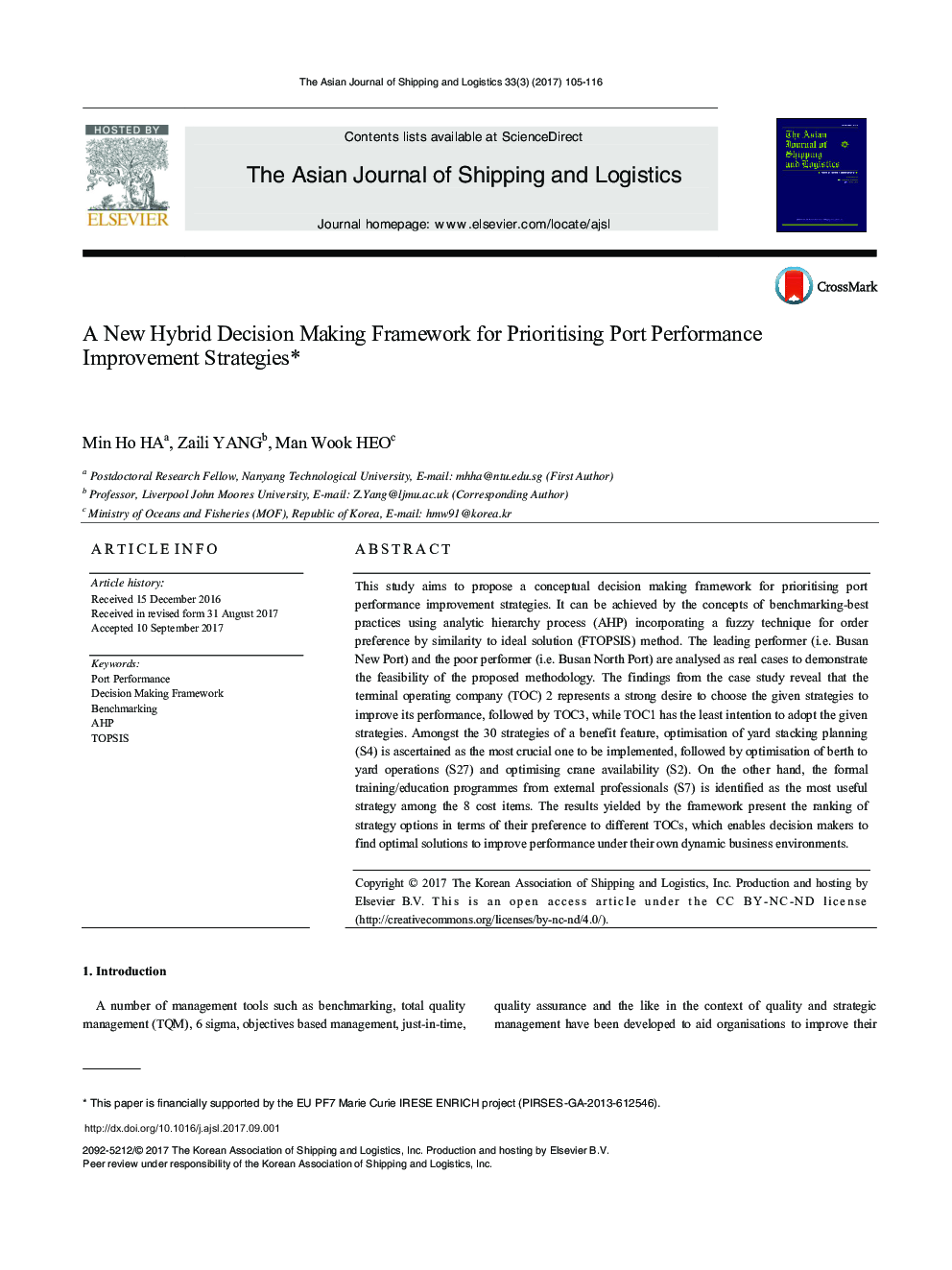| Article ID | Journal | Published Year | Pages | File Type |
|---|---|---|---|---|
| 5105357 | The Asian Journal of Shipping and Logistics | 2017 | 12 Pages |
Abstract
This study aims to propose a conceptual decision making framework for prioritising port performance improvement strategies. It can be achieved by the concepts of benchmarking-best practices using analytic hierarchy process (AHP) incorporating a fuzzy technique for order preference by similarity to ideal solution (FTOPSIS) method. The leading performer (i.e. Busan New Port) and the poor performer (i.e. Busan North Port) are analysed as real cases to demonstrate the feasibility of the proposed methodology. The findings from the case study reveal that the terminal operating company (TOC) 2 represents a strong desire to choose the given strategies to improve its performance, followed by TOC3, while TOC1 has the least intention to adopt the given strategies. Amongst the 30 strategies of a benefit feature, optimisation of yard stacking planning (S4) is ascertained as the most crucial one to be implemented, followed by optimisation of berth to yard operations (S27) and optimising crane availability (S2). On the other hand, the formal training/education programmes from external professionals (S7) is identified as the most useful strategy among the 8 cost items. The results yielded by the framework present the ranking of strategy options in terms of their preference to different TOCs, which enables decision makers to find optimal solutions to improve performance under their own dynamic business environments.
Related Topics
Social Sciences and Humanities
Economics, Econometrics and Finance
Economics, Econometrics and Finance (General)
Authors
Min Ho Ha, Zaili Yang, Man Wook Heo,
